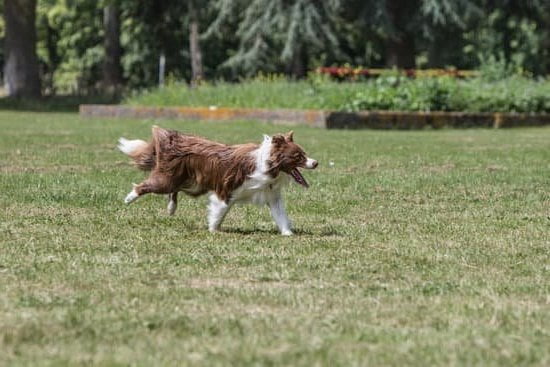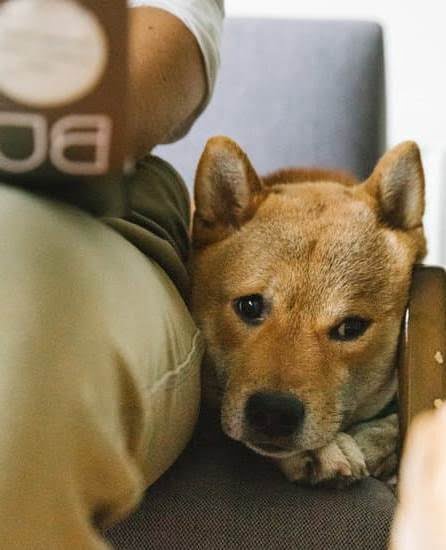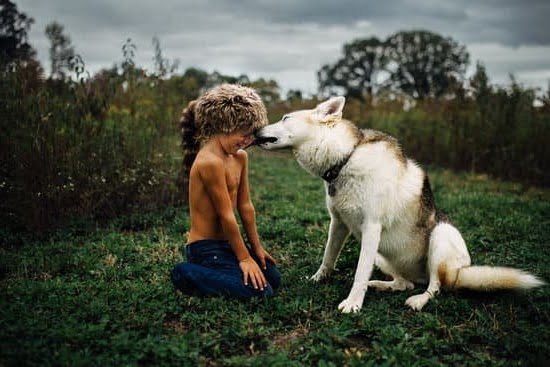Are you wondering how to train a dog to protect you? Having a protection-trained dog can provide an added sense of security and peace of mind, knowing that your furry companion is not only a loyal friend but also a reliable protector. In this guide, we will explore the steps and techniques involved in training your dog for protection, from choosing the right breed to finding professional help for advanced training.
One of the key aspects of training a dog to protect you is selecting the right breed for protection training. Certain breeds are naturally more inclined towards guarding and protecting their owners, making them ideal candidates for this type of training.
Building a strong bond with your dog through positive reinforcement is another crucial element in creating a successful protection-trained dog. By establishing trust and respect in your relationship, you can ensure that your dog will reliably execute protective behaviors when needed.
Basic obedience training serves as the foundation for protection training, teaching your dog essential commands and skills that are necessary for their role as a protector. Introducing protection training techniques and commands gradually, along with consistent practice and reinforcement, will help your dog develop the necessary skills to become an effective guardian.
As you progress in training, it is important to gradually increase the level of difficulty and introduce real-life scenarios to test your dog’s abilities in different situations.
Choosing the Right Breed for Protection Training
When it comes to training a dog to protect you, choosing the right breed is crucial. Not all dog breeds are suited for protection training, so it’s important to select a breed that has the natural instincts and characteristics needed for this type of training. Breeds such as German Shepherds, Belgian Malinois, Rottweilers, and Doberman Pinschers are popular choices for protection training due to their loyalty, intelligence, and protective nature.
Understanding Breed Characteristics
Each breed has its own unique traits that make them suitable for protection training. For example, German Shepherds are known for their courage and ability to quickly learn commands, while Belgian Malinois are highly energetic and have a strong work drive. Understanding these breed characteristics can help you determine which breed is best suited for your specific needs and lifestyle when it comes to training them to protect you.
Evaluating Temperament
In addition to understanding breed characteristics, it’s important to evaluate the temperament of individual dogs within the chosen breed. Temperament plays a significant role in how well a dog will respond to protection training techniques and commands. Look for dogs that are confident, alert, and have a strong desire to please their owners. By selecting a dog with the right temperament, you’ll be setting yourself up for success in training them to protect you effectively.
As you begin the process of choosing the right breed for protection training, consider seeking guidance from professional trainers or organizations that specialize in working with protective breeds. They can provide valuable insights into which breed may be best suited for your specific security needs and provide guidance on how to train a dog to protect you effectively based on the chosen breed’s characteristics and temperament.
Building a Strong Bond With Your Dog Through Positive Reinforcement
Building a strong bond with your dog is crucial when it comes to training them to protect you. This bond not only enhances communication between you and your furry companion but also fosters trust and loyalty. Positive reinforcement is an effective method to strengthen the relationship with your dog while encouraging good behavior. By using rewards such as treats, toys, or praise, you can motivate your dog to perform desired actions and build a positive association with training.
Creating a Positive Environment
To establish a strong bond with your dog, create a positive training environment that is free from distractions and stress. Ensure that your dog feels comfortable and safe during training sessions. Use a calm tone of voice, maintain patience, and show consistency in your commands. Building trust takes time, so be patient and understanding of your dog’s individual personality and learning pace.
Engaging in Playtime
In addition to formal training sessions, engaging in playtime with your dog can help strengthen the bond between you two. Interactive games like fetch or tug-of-war not only provide physical exercise but also promote bonding through shared activities. Playtime allows you to connect with your dog on a deeper level outside of training routines. Remember that bonding moments are essential for developing a strong foundation for protection training.
Establishing Leadership
As the owner and trainer, it’s important to establish yourself as the leader in the relationship with your dog. This means setting boundaries, enforcing rules consistently, and guiding your dog through challenges.
By demonstrating leadership qualities, you can earn respect from your canine companion and build a foundation for successful protection training. Through positive reinforcement, playtime, and clear communication, you can create a strong bond with your dog that will enhance their ability to protect you effectively in various situations.
Basic Obedience Training as a Foundation for Protection Training
Basic obedience training is an essential foundation when it comes to training a dog to protect you. This type of training lays the groundwork for more advanced protection techniques by teaching your dog to follow commands promptly and reliably. By mastering basic obedience commands such as sit, stay, come, and heel, your dog will be better prepared to work on more specialized protection tasks.
One key aspect of basic obedience training is consistency. It is important to consistently reinforce these commands with positive reinforcement, such as treats or praise, to encourage good behavior. Dogs thrive on routine and clear communication, so regular training sessions that are structured and predictable can help your canine companion understand what is expected of them.
In addition to basic obedience commands, socialization plays a crucial role in preparing a dog for protection training. Exposing your dog to different environments, people, and other animals helps them become well-rounded and confident in various situations. A well-socialized dog is more likely to be a successful protector because they are accustomed to different stimuli and can differentiate between normal interactions and potential threats.
| Aspect | Description |
|---|---|
| Consistency | Consistent reinforcement of commands with positive rewards |
| Socialization | Exposure to different environments, people, and animals for confidence building |
Introducing Protection Training Techniques and Commands
Once you have chosen the right breed for protection training and built a strong bond with your dog through positive reinforcement, it is time to start introducing protection training techniques and commands. This step is crucial in teaching your dog how to effectively protect you in various situations.
One of the key aspects of protection training is teaching your dog how to differentiate between a threat and a normal situation. Start by incorporating commands such as “watch” or “guard” when you want your dog to pay attention to their surroundings. By using consistent cues and rewards, your dog will learn to associate these commands with standing alert and being ready to protect you if needed.
It is important to also work on obedience commands such as “sit,” “stay,” and “come” in conjunction with protection training. These commands provide a solid foundation for further advanced techniques and help ensure that your dog listens and obeys your commands even in high-stress situations. Remember, consistency and practice are key in this phase of training on how to train a dog to protect you.
Practice and Consistency in Training Sessions
Training a dog to protect you requires dedication, consistency, and regular practice sessions. It is essential to establish a routine that includes daily training sessions to reinforce the desired behaviors in your dog. Consistency is key in ensuring that your dog understands what is expected of them and consistently responds to commands. This also helps build trust between you and your dog, which is crucial for effective protection training.
During training sessions focused on protection training, make sure to practice in a variety of environments to help your dog generalize the learned behaviors. Start in a familiar and quiet environment before gradually introducing distractions and different settings. This will help your dog learn to focus on their protective duties regardless of the surroundings. Consistency in training will help your dog understand that they need to remain vigilant and respond appropriately regardless of the situation.
It is important to remember that every dog learns at their own pace, so patience is key during training sessions. Some dogs may pick up on protection training techniques quickly, while others may require more time and repetition. Be patient with your furry companion and celebrate small victories along the way. With consistent practice and positive reinforcement, your dog will become a reliable protector who can effectively keep you safe in various situations.
Gradually Increasing the Level of Difficulty and Real-Life Scenarios
Training a dog to protect you involves gradually increasing the level of difficulty and introducing real-life scenarios to ensure that your furry companion is well-prepared for any situation. Here are some tips on how to take your protection training to the next level:
- Start by setting up controlled scenarios: Begin by creating controlled situations that mimic potential threats. For example, have a trusted friend or family member approach you in a way that might be perceived as threatening, such as walking towards you with a raised voice or sudden movements. This will allow you to gauge your dog’s response and adjust training as needed.
- Utilize protective gear for safety: As you progress in training and introduce more challenging scenarios, consider using protective gear such as bite sleeves or bite suits to protect yourself from accidental bites or scratches. Safety should always be a top priority when training a dog for protection.
- Practice in different environments: Dogs need to generalize their training across various settings and situations. Gradually expose your dog to different environments, such as parks, busy streets, or crowded areas, to ensure they can respond appropriately no matter where they are. This will help them become more reliable protectors in any scenario.
Remember that consistency and patience are key when gradually increasing the difficulty level of protection training. It’s essential to work at your dog’s pace and celebrate small victories along the way. With dedication and proper guidance, you can train your dog to be a loyal protector who will keep you safe in any situation.
Safety Precautions and Responsible Ownership in Protection Training
Training a dog to protect you is a serious responsibility that requires careful consideration of safety precautions and responsible ownership. To ensure the well-being of both your dog and yourself, it is important to follow these guidelines:
- Provide proper supervision during training sessions to prevent any accidents or injuries.
- Use appropriate protective gear, such as bite sleeves or suits, when training for protection work.
- Avoid using punishment-based training methods that can lead to fear or aggression in your dog.
In addition to safety precautions, responsible ownership plays a key role in protection training. This includes:
- Regular veterinary care to ensure your dog’s health and well-being throughout the training process.
- Proper exercise and mental stimulation to keep your dog physically and mentally balanced.
- Respect for your dog’s individual temperament and limitations, understanding that not all dogs are suited for protection work.
By prioritizing safety precautions and responsible ownership in protection training, you can create a positive and effective learning environment for your dog. Remember that the goal is not only to train your dog to protect you but also to build a trusting and respectful bond between the two of you.
It is always recommended to seek guidance from professional trainers who specialize in protection work. They can provide expert advice on advanced techniques, help overcome any challenges you may encounter during training, and ensure that both you and your dog are prepared for real-life scenarios where protection may be necessary. By following these guidelines, you can set the foundation for a strong and reliable protector while maintaining a safe and fulfilling relationship with your canine companion.
Finding Professional Help and Resources for Advanced Protection Training Techniques
When it comes to training your dog to protect you, seeking professional help and resources for advanced techniques can be incredibly beneficial. These experts have the knowledge and experience to guide you through the process and help ensure that your dog is properly trained to protect you in various situations.
One of the key benefits of working with professionals is that they can tailor the training program to suit your dog’s specific needs and temperament, maximizing their potential as a protector.
Professional trainers can offer specialized classes and workshops that focus specifically on protection training, giving you access to in-depth instruction on advanced techniques. These classes often provide hands-on practice opportunities where you can work closely with your dog under the guidance of an experienced trainer. Additionally, these professionals can also provide valuable insights on how to read your dog’s body language and behavior cues during protection training, helping you understand their responses better.
Moreover, professional trainers have access to resources such as specialized equipment and tools that can aid in advanced protection training. From bite sleeves to agitation muzzles, these tools are designed to facilitate safe and effective training sessions for both you and your dog.
By incorporating these resources into your training regimen, you can ensure that your dog is learning the necessary skills in a controlled environment. Remember, safety should always be a top priority when engaging in protection training with your canine companion.
| Benefit of Professional Help | Access to Specialized Equipment |
|---|---|
| Tailored training program | Bite sleeves for safe training |
| Hands-on practice opportunities | Agitation muzzles for controlled sessions |
Conclusion
In conclusion, training your dog to protect you can be a rewarding experience that not only enhances your safety but also strengthens the bond between you and your furry companion. By choosing the right breed for protection training and utilizing positive reinforcement techniques, you can build a solid foundation for success in this specialized area of obedience training. Remember that basic obedience training is crucial before progressing to protection training, ensuring that your dog understands and follows commands effectively.
Introducing protection training techniques and commands gradually, with patience and consistency, will help your dog develop the skills needed to act as a reliable protector. As you progress through different levels of difficulty and introduce real-life scenarios into your training sessions, always prioritize safety precautions to prevent any unwanted incidents. Responsible ownership is key in protection training, as it involves not only keeping your dog safe but also others around you.
If you feel like you need additional guidance or assistance in advanced protection training techniques, don’t hesitate to seek professional help or resources. With dedication and effort put into training, you will eventually enjoy the benefits of having a well-trained dog as your loyal protector.
Remember, the process may take time and effort but the end result of having a trustworthy guardian by your side is truly priceless. So keep practicing, stay patient, and watch as your canine companion transforms into a reliable protector through proper training methods.
Frequently Asked Questions
How Long Does It Take to Train a Dog to Protect?
The amount of time it takes to train a dog to protect can vary depending on the breed, age, and individual temperament of the dog. Generally, training a dog for protection can take several weeks to several months of consistent, structured training sessions.
How Do You Make Sure Your Dog Will Protect You?
To ensure that your dog will protect you, it is important to start with a solid foundation of obedience training. This includes teaching basic commands such as sit, stay, and come. Building a strong bond with your dog based on trust and respect is crucial in developing their protective instincts.
Do Dogs Have to Be Trained to Protect Their Owners?
While some dogs may naturally be inclined to protect their owners without any formal training, it is generally recommended to provide specific protection training to ensure that the dog responds appropriately in threatening situations. Professional trainers can help teach dogs how to differentiate between normal interactions and potentially dangerous situations when it comes to protecting their owners.

Welcome to the blog! I am a professional dog trainer and have been working with dogs for many years. In this blog, I will be discussing various topics related to dog training, including tips, tricks, and advice. I hope you find this information helpful and informative. Thanks for reading!





